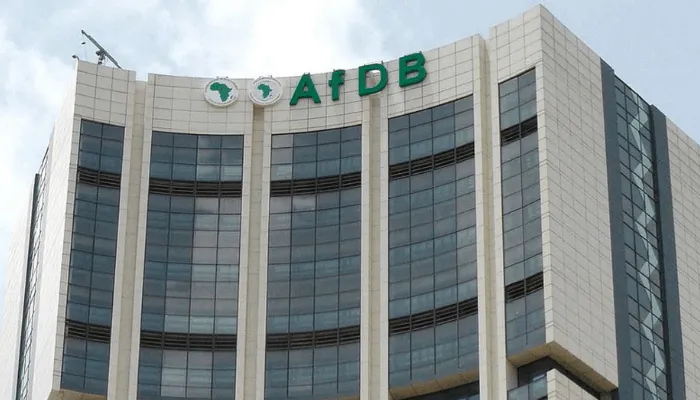South Africa, Africa’s largest economy, is at a crossroads. Amid persistent infrastructural deficits—especially in energy and logistics—and sluggish economic growth, the country is grappling with a crisis that has deepened over the past decade. Chronic issues such as load-shedding and inefficient transport networks have undermined productivity, leaving the nation with stagnant growth rates, soaring unemployment, and mounting inflation. In response, the government is pushing an ambitious reform agenda that includes structural changes and strategic infrastructure investments, notably the development of coastal harbours that promise to catalyse local economies and improve export capabilities.
A Decade of Stagnation
Since 2008, South Africa’s economic engine has sputtered under a weight of structural inefficiencies. Economic growth has averaged a mere 0.8% annually over the past seven years, far below expectations and trailing behind the performance of many peer nations. A World Bank report highlighted that from 2015 to 2021, South Africa ranked 80th out of 170 nations for productivity growth. The country’s productivity—calculated as GDP per employed person—has grown at only about two-thirds of the global average. This sluggish productivity is not just a statistic; it is a manifestation of deeper issues that have left the nation vulnerable to external shocks and significantly impeded its capacity to raise wages or improve living standards.
Multiple factors have contributed to this performance gap. Persistent load-shedding has crippled industrial output, while logistical bottlenecks continue to hamper the smooth movement of goods both within and outside the country. These challenges have stymied the competitiveness of South African businesses on the global stage and have kept the nation from leveraging its full economic potential.
Infrastructure: The Core of the Problem
At the heart of South Africa’s economic woes is its vast and aging infrastructure deficit. Energy and logistics, in particular, have emerged as chronic pain points. Eskom—the state-owned power utility—has faced recurring failures that have left factories and businesses in the dark, literally and figuratively. Scheduled blackouts, known as load-shedding, have become part of the national vocabulary, affecting everything from manufacturing processes to the daily routines of ordinary South Africans. Although there have been recent efforts to ease load-shedding, the damage to industrial productivity may take years to reverse.
Logistical challenges compound these energy woes. Transnet, the state-owned freight transport and logistics company, has long struggled with inefficiency, and South Africa’s ports have suffered in global comparisons. In a recent World Bank review, Cape Town was ranked last among 405 container ports worldwide. Along with three other ports falling within the bottom 15, these rankings underscore not just operational inefficiencies but also the urgent need for reform in the country’s logistics networks.
For a nation that relies on extensive trade routes to reach both domestic and international markets, these deficiencies have a crippling effect. Inefficient logistics drive up costs, reduce export competitiveness, and hinder foreign direct investment. As a result, while other emerging markets have celebrated rapid industrial growth, South Africa’s progress has been notably hampered by infrastructural shortcomings.
The Government’s Response: A Bold, If Risky, Reform Agenda
Recognising that halting or reversing decades of stagnation requires decisive action, the South African government has shifted its priorities towards boosting productivity through comprehensive structural reforms. Central to this new approach is the focus on improving infrastructure and shifting the nation’s industrial policy from protectionism toward export-led growth.
Revamping Trade Policies and Industrial Strategy
Historically, South Africa’s industrial policy has leaned heavily towards localization and sectoral protection. This approach, while designed to shield local industries, has often come at the expense of broader, export-driven growth. By isolating local industries from the rigours of global competition, the government inadvertently stifled innovation and lost out on the benefits of international technological transfer and innovation. Critics argue that these protectionist measures have provided only short-term relief and have ultimately undercut the long-term competitiveness of the economy.
In a dramatic policy reversal, recent government statements emphasize the need for trade liberalization and global competitiveness. Reformists within the policy circle argue that sustainable growth will not come from insulating domestic industries but by aggressively integrating with global markets. They stress the importance of harnessing World Trade Organization guidelines on trade liberalization, which have historically spurred technological innovation and productivity gains in successful economies.
Infrastructure Investment: Coastal Harbours as Economic Catalysts
A particularly innovative element of the government’s response is its focus on coastal infrastructure development. Public Works and Infrastructure Deputy Minister Sihle Zikalala is set to lead stakeholder consultations in Port St Johns, Eastern Cape, on April 11, 2025. The initiative aims to develop a small harbour in the area, a project that is expected to create jobs, boost local economic activity, and serve as a springboard for regional value chains.
Alongside Port St Johns, planned projects include new developments in Port Shepstone, KwaZulu-Natal, and Port Nolloth in the Northern Cape. These initiatives are part of a broader effort to rejuvenate coastal infrastructure that has long been neglected. Public Works and Infrastructure Minister Dean Macpherson, together with Saldanha Bay Mayor André Truter, recently committed to redeveloping the small harbours in St Helena Bay and Saldanha Bay, which have suffered from disrepair and criminal activity. The redevelopment of these port facilities is not only intended to improve logistical efficiency but also to signal a new era of infrastructural renewal that can serve as a foundation for broader economic recovery.
The rationale behind focusing on harbours is clear: South Africa’s geographical advantage as a gateway to southern African trade routes has been underutilised due to outdated and inefficient port facilities. By modernizing these ports, the government hopes to reverse decades of neglect and transform these logistical weak points into assets that can drive export-led growth.
Energy Security and the Role of Eskom
Energy security remains a pivotal aspect of the crisis. Eskom’s chronic operational issues have not only disrupted daily life but have also posed a severe threat to industrial productivity. The government’s strategy now includes plans for significant investment in energy infrastructure. Enhancing energy security involves not just repairing existing systems but also transitioning to more sustainable energy sources. This is seen as critical not only for reducing load-shedding but also for supporting long-term economic stability and reducing the country’s carbon footprint—a dual benefit in an era of global environmental consciousness.
Global Integration: Rebuilding Trade Ties and Investor Confidence
South Africa’s challenges are not limited to domestic policy failures; they also stem from a broader disengagement from global trade. By focusing inward through protectionist policies, the nation has missed critical opportunities to integrate with the global economy. Rebuilding strained relations—especially with key export markets like the United States and the European Union—is now an urgent priority.
The government is exploring strategies to mend relations with trading partners and to harness the benefits of international trade. Foreign policy efforts include a renewed focus on diplomatic engagement and trade negotiations aimed at reducing tariffs and opening up new markets. Strengthening ties with global partners is seen as essential not only for boosting exports but also for attracting foreign direct investment. Investor confidence has been rocked in recent years by perceived policy uncertainty and infrastructural weaknesses; reversing this trend is pivotal for long-term growth.
Economic experts have pointed out that South Africa accounts for only about 0.6% of global GDP, and its economic isolation has limited its growth potential. A more outward-looking trade policy could tap into vast opportunities that arise from globalisation, particularly as the world transitions to more interconnected, technology-driven economies. Embracing innovation and digitalisation is at the heart of this strategy.
Embracing Technological Innovation
Innovation is widely regarded as the engine of long-term productivity growth. Unfortunately, South Africa has lagged behind many of its peers in research and development. Investment in technology—from digitalisation and automation to artificial intelligence—is critical for bolstering industrial productivity and encouraging a shift from low-value to high-value manufacturing. The government is now seeking to complement its infrastructural investments with initiatives designed to spur technological advancement. This includes creating favourable conditions for private-sector investment in R&D, improving the education system to better prepare a skilled workforce, and offering incentives to tech start-ups.
There is a growing recognition that economic recovery depends on the synergy between physical infrastructure and digital capabilities. For instance, improved port facilities will not reach their full potential unless supported by digital logistics management systems that increase efficiency and transparency. Similarly, progress in the energy sector requires modernisation that can integrate renewable energy sources with smart grid technology. By combining infrastructural investments with a robust digital strategy, South Africa aims to position itself as a competitive player in an increasingly connected global economy.
Socioeconomic Implications: Beyond the Numbers
Economic statistics, while sobering, only tell part of the story. For millions of South Africans, the prolonged period of economic stagnation has translated into real human suffering—rising unemployment, persistent poverty, and a decline in living standards. The lack of job opportunities has contributed to widespread dissatisfaction and social unrest, further complicating the political landscape. With youth unemployment reaching critical levels, the economic crisis poses a threat to social stability and national cohesion.
The government’s current initiatives, while primarily economic in focus, have significant social dimensions. Infrastructure projects like harbour redevelopments do more than improve trade efficiency; they create employment opportunities and stimulate local economies. In regions like the Eastern Cape, where poverty levels are historically high, such initiatives can have transformative impacts on communities. These projects offer hope for a future where economic growth lifts entire communities out of destitution, providing not just jobs but also the foundation for long-term development.
Moreover, successful reform in sectors like energy and logistics could also lead to lower consumer prices and improved access to essential services, directly benefiting ordinary citizens. Stability in energy supply would reduce the frequency of load-shedding, a development that would have a far-reaching positive impact on both households and industries. As everyday South Africans experience better services and more job opportunities, social discontent may subside, paving the way for greater political stability.
The International Perspective: Lessons and Opportunities
Globally, South Africa’s economic challenges are reflective of broader trends seen in emerging markets. Many developing economies face similar dilemmas—a need to modernise infrastructure, integrate into global trade networks, and leverage technological innovations while also addressing deep-seated social inequalities. However, South Africa’s unique position as the continent’s economic powerhouse means that its trajectory has implications that extend far beyond its borders.
International institutions such as the World Bank and the International Monetary Fund have long warned that infrastructural deficits and protectionist policies can become self-fulfilling prophecies, trapping economies in cycles of stagnation. For South Africa, the imperative is now to break free from these constraints. Reforms that promote transparency, improve governance, and encourage foreign investment are critical if the country is to enhance its productivity and secure long-term growth.
The recent focus on developing coastal harbours is emblematic of a broader strategic shift. By investing in key logistical hubs, South Africa can not only streamline its domestic supply chains but also become a vital transshipment point for trade in the region. This is particularly significant given the global trend towards regionalisation, where logistics and supply chain efficiencies are increasingly paramount. Such investments, if successful, could serve as a model for other countries facing similar challenges and offer a blueprint for how integrated infrastructural development can support economic dynamism.
The Road Ahead: A Call for Structural Reforms and Long-Term Commitment
The path to recovery for South Africa is fraught with challenges, but there are clear steps that policymakers and industry leaders can take to set the nation on a course toward sustainable growth. Foremost among these is the need for structural reforms that prioritize productivity over short-term fixes. This means overhauling entrenched protectionist policies in favour of strategies that encourage competition, innovation, and global integration.
The government must also commit to a long-term investment strategy in infrastructure. The current focus on developing coastal harbours is an important first step, but similar initiatives will be needed across other critical sectors. Modernising rail networks, upgrading road infrastructure, and ensuring a stable and reliable energy supply are all essential components of a comprehensive growth strategy. Each of these areas, if improved, can have a multiplier effect on the entire economy by reducing costs, improving efficiency, and enhancing the country’s attractiveness to foreign investors.
In parallel, reforms in education and skills development are crucial for creating a workforce capable of driving and sustaining productivity growth. Building strong links between technical and vocational education and industry needs can ensure that workers are equipped with the skills necessary to thrive in a digital, automated, and increasingly competitive global economy. Encouraging private-sector investment in research and development and supporting start-ups will further help to spark innovation and diversify the economy.
Ultimately, overcoming South Africa’s economic crisis will require a coordinated effort from all segments of society. Government, industry, and communities alike must work together to address not just the symptoms but the underlying causes of stagnation. This means moving beyond macroeconomic gimmicks and short-term relief measures to adopt a coherent, long-term vision for economic renewal—one that prioritizes increased productivity, robust infrastructure, and meaningful integration into the global economy.
Conclusion: Seizing the Moment for a New Era
South Africa now stands at a pivotal moment. The economic crisis, marked by decades of stagnation and exacerbated by critical infrastructure deficits, represents both an immense challenge and a profound opportunity. The government’s recent initiatives—ranging from ambitious harbour redevelopment projects to the push for trade liberalisation and technological innovation—signal a willingness to confront these challenges head-on. However, success will depend on the ability to execute these policies effectively and to foster an environment where long-term, sustainable growth can flourish.
For millions of South Africans, the stakes could not be higher. With unemployment soaring and many communities struggling under the weight of economic stagnation, the promise of improved infrastructure, renewed industrial competitiveness, and an integrated global trade strategy offers a much-needed lifeline. As the country embarks on this new chapter, it is imperative that all efforts be calibrated towards not just boosting GDP growth, but enhancing productivity at every level of the economy—ultimately leading to higher wages, better living standards, and a more equitable society.
In the broader context, South Africa’s experience serves as a cautionary tale for other emerging markets. It underscores the importance of continuous investment in infrastructure and human capital and highlights the risks of isolationist policies in an increasingly interconnected world. By embracing reform and leveraging its strategic advantages, South Africa has the potential to transform its economic landscape and emerge as a beacon of renewal in a region long overshadowed by persistent challenges.
The road ahead is undeniably steep, but the renewed commitment of policymakers and industry leaders offers a glimmer of hope. With decisive actions in reforming trade policies, modernising infrastructure, and investing in innovation, South Africa could well be poised to turn its economic crisis into an opportunity—a chance to reassert itself on the global stage and build a more prosperous future for its people.
Ready to take your career to the next level? Join our dynamic courses: ACCA, HESI A2, ATI TEAS 7 , HESI EXIT , NCLEX – RN and NCLEX – PN, Financial Literacy!🌟 Dive into a world of opportunities and empower yourself for success. Explore more at Serrari Ed and start your exciting journey today! ✨
photo source: Google
By: Montel Kamau
Serrari Financial Analyst
10th April, 2025
Article, Financial and News Disclaimer
The Value of a Financial Advisor
While this article offers valuable insights, it is essential to recognize that personal finance can be highly complex and unique to each individual. A financial advisor provides professional expertise and personalized guidance to help you make well-informed decisions tailored to your specific circumstances and goals.
Beyond offering knowledge, a financial advisor serves as a trusted partner to help you stay disciplined, avoid common pitfalls, and remain focused on your long-term objectives. Their perspective and experience can complement your own efforts, enhancing your financial well-being and ensuring a more confident approach to managing your finances.
Disclaimer: This article is for informational purposes only and does not constitute financial advice. Readers are encouraged to consult a licensed financial advisor to obtain guidance specific to their financial situation.
Article and News Disclaimer
The information provided on www.serrarigroup.com is for general informational purposes only. While we strive to keep the information up to date and accurate, we make no representations or warranties of any kind, express or implied, about the completeness, accuracy, reliability, suitability, or availability with respect to the website or the information, products, services, or related graphics contained on the website for any purpose. Any reliance you place on such information is therefore strictly at your own risk.
www.serrarigroup.com is not responsible for any errors or omissions, or for the results obtained from the use of this information. All information on the website is provided on an as-is basis, with no guarantee of completeness, accuracy, timeliness, or of the results obtained from the use of this information, and without warranty of any kind, express or implied, including but not limited to warranties of performance, merchantability, and fitness for a particular purpose.
In no event will www.serrarigroup.com be liable to you or anyone else for any decision made or action taken in reliance on the information provided on the website or for any consequential, special, or similar damages, even if advised of the possibility of such damages.
The articles, news, and information presented on www.serrarigroup.com reflect the opinions of the respective authors and contributors and do not necessarily represent the views of the website or its management. Any views or opinions expressed are solely those of the individual authors and do not represent the website's views or opinions as a whole.
The content on www.serrarigroup.com may include links to external websites, which are provided for convenience and informational purposes only. We have no control over the nature, content, and availability of those sites. The inclusion of any links does not necessarily imply a recommendation or endorsement of the views expressed within them.
Every effort is made to keep the website up and running smoothly. However, www.serrarigroup.com takes no responsibility for, and will not be liable for, the website being temporarily unavailable due to technical issues beyond our control.
Please note that laws, regulations, and information can change rapidly, and we advise you to conduct further research and seek professional advice when necessary.
By using www.serrarigroup.com, you agree to this disclaimer and its terms. If you do not agree with this disclaimer, please do not use the website.
www.serrarigroup.com, reserves the right to update, modify, or remove any part of this disclaimer without prior notice. It is your responsibility to review this disclaimer periodically for changes.
Serrari Group 2025





